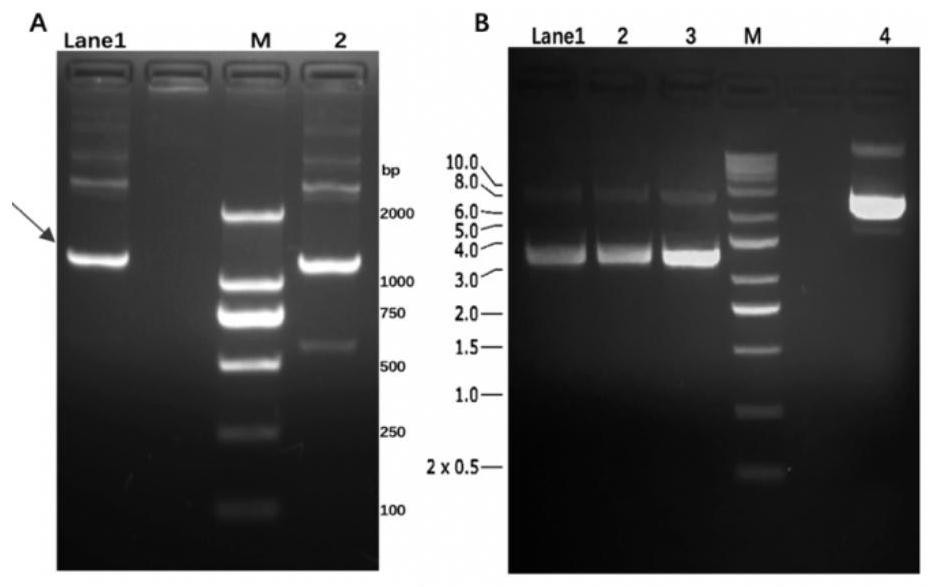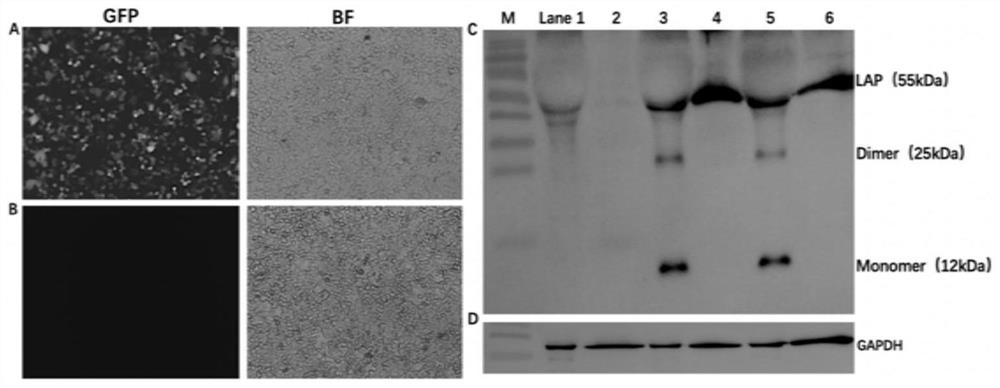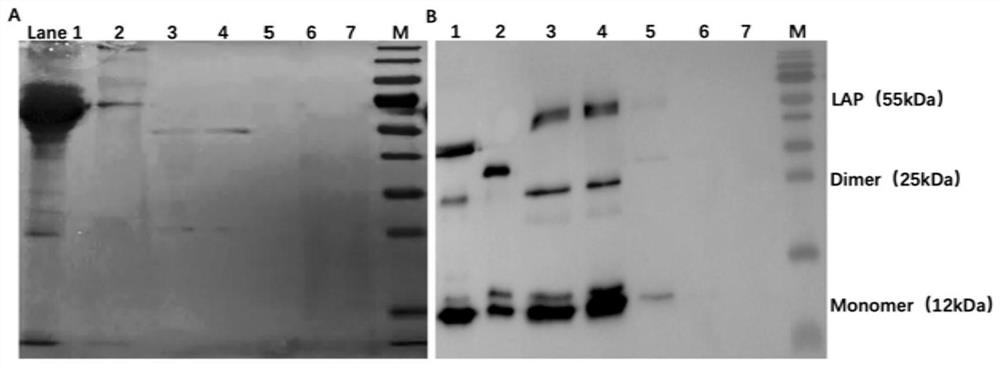Anti-human transforming growth factor beta 1 nanobody b3 and its preparation method and application
A transforming growth factor and nanobody technology, applied in the direction of microorganism-based methods, biochemical equipment and methods, chemical instruments and methods, etc., can solve the problems of poor solubility, high immunogenicity, reduction of tumor matrix protein synthesis and fibroblast The quantity and other issues, to achieve the effect of high affinity and strong specificity
- Summary
- Abstract
- Description
- Claims
- Application Information
AI Technical Summary
Problems solved by technology
Method used
Image
Examples
Embodiment 1
[0044] Example 1. Construction of eukaryotic expression plasmid cFUGW-TGF-β1 and protein expression and purification
[0045] The standard full-length DNA sequence of human TGF-β1 used in this example (including N-terminal signal peptide (signalpeptides, 1-39aa), LAP precursor structure (30-278aa) and C-terminal TGF-β monomer (279-390aa) ) three parts, the length of the coding nucleotide sequence is 1173 bp, as shown in SEQ ID NO: 1 in the sequence listing) and stored in the Gateway Cloning vector (obtained by conventional Gateway gene cloning technology).
[0046] This embodiment specifically includes the following steps:
[0047] 1.1. First use Snapgene program to design upstream primer F and downstream primer R for amplifying the standard full-length DNA sequence of TGF-β1, and introduce Age I and EcoR I restriction sites (the following upstream primer F and downstream primer respectively) The underlined part in the R sequence) and its protective base; in addition, the Koz...
Embodiment 2
[0057] Example 2: Construction of alpaca phage VHH display library
[0058] This example uses the purified protein of TGF-β1 obtained in the above Example 1 to immunize alpacas to construct a VHH gene library, which specifically includes the following steps:
[0059] 2.1. Primary immunization 1 mg of TGF-β1 purified protein (obtained in Example 1) was mixed with complete Freund's adjuvant 1:1 in equal volume and fully emulsified, and the alpacas were immunized by subcutaneous injection; β1 purified protein was mixed with an equal volume of incomplete Freund's adjuvant for 4 booster immunizations; a total of 5 times of immunization, with a single interval of 20 days. A small amount of alpaca peripheral blood was drawn for titer detection. When the immune titer was greater than 1:60,000, booster immunization was performed again. After 24 hours, 100 mL of anticoagulation was collected from the jugular vein of the immunized alpaca. Peripheral blood lymphocytes were extracted from...
Embodiment 3
[0066] Example 3: Screening of positive clones expressing Nanobody TGF-β1-VHH
[0067] 3.1: Simplified steps for affinity panning:
[0068] (1) Coat the immune tube with the purified TGF-β1 protein obtained in Example 1, overnight at 4°C.
[0069] (2) Wash the tube 3 times with PBS and pat dry.
[0070] (3) Block with 3% MPBS (3% skim milk added to PBS), incubate at 37° C. for 2 h, pour off the blocking solution, wash the tube three times with PBS, and pat dry.
[0071] (4) Add the alpaca phage VHH display library (phage library) prepared in Example 2 to the sealed immune tube, 2 ml / tube, shake gently for 30 min, and then incubate for 1.5 h.
[0072] (5) Discard the phage library in the tube, wash 3 times with PBST, then 3 times with PBS, and pat dry.
[0073] (6) Add host strain TG1 to elute the bound phage library. This completes the first round of panning and obtains the primary screening antibody library.
[0074] (7) Repeat the above-mentioned panning steps 4), 5) an...
PUM
 Login to View More
Login to View More Abstract
Description
Claims
Application Information
 Login to View More
Login to View More - R&D
- Intellectual Property
- Life Sciences
- Materials
- Tech Scout
- Unparalleled Data Quality
- Higher Quality Content
- 60% Fewer Hallucinations
Browse by: Latest US Patents, China's latest patents, Technical Efficacy Thesaurus, Application Domain, Technology Topic, Popular Technical Reports.
© 2025 PatSnap. All rights reserved.Legal|Privacy policy|Modern Slavery Act Transparency Statement|Sitemap|About US| Contact US: help@patsnap.com



